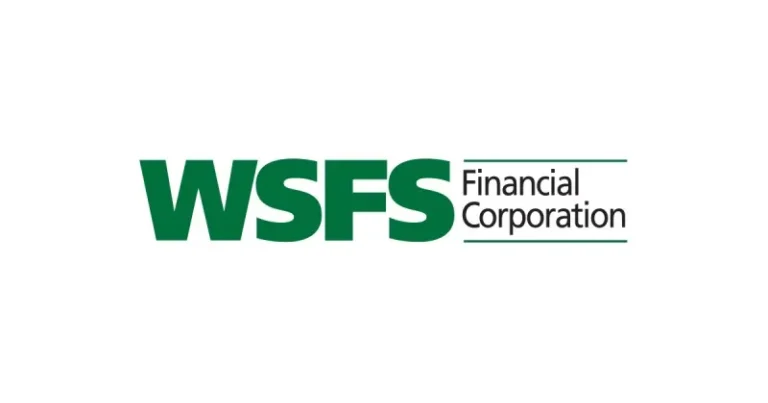
HomeStreet Bank, a prominent financial institution and the principal subsidiary of HomeStreet, Inc. (Nasdaq: HMST), recently announced a significant transaction involving the sale of $990 million in multifamily commercial real estate loans to Bank of America. This strategic move marks a pivotal moment for HomeStreet Bank as it initiates a broader plan aimed at returning to profitability. The sale, which is anticipated to close before December 31, 2024, involves a servicing retained arrangement and reflects a price of 92% of the principal balance of the loans, including the value of retained servicing. This article delves into the implications of this transaction, HomeStreet’s strategic objectives, and the potential impacts on the financial landscape.
A Strategic Shift for HomeStreet Bank
The decision to sell $990 million in multifamily loans comes as part of a comprehensive strategic plan designed to enhance the financial stability and profitability of HomeStreet Bank. Mark Mason, Chairman of the Board, President, and Chief Executive Officer of HomeStreet, Inc., emphasized the importance of this transaction in the bank’s long-term strategy. According to Mason, the sale represents a critical first step in implementing a plan to restore profitability both for the bank and the parent company on a consolidated basis.
“The pricing of the loan sale reflects the current interest rate environment and the nature of the loans being sold,” Mason stated. He noted that these loans are primarily lower-yielding and possess longer durations compared to the overall loan portfolio. By reallocating the proceeds from this sale, HomeStreet plans to address high-cost funding sources, including Federal Home Loan Bank (FHLB) advances and brokered deposits, which carry significantly higher interest rates than the bank’s core deposits. This strategic allocation aims to enhance the bank’s balance sheet and reduce funding costs.

HomeStreet
Understanding Multifamily Loans and Their Market Dynamics
Multifamily loans, a critical component of commercial real estate lending, involve financing for properties with multiple residential units, such as apartment complexes and condominium buildings. These loans typically feature longer durations and lower yields compared to other loan types, making them sensitive to interest rate fluctuations. The decision to divest a significant portion of multifamily loans reflects HomeStreet Bank’s efforts to optimize its portfolio in response to changing market conditions.
The multifamily loan market has faced challenges due to rising interest rates, which have impacted property valuations and investor returns. By selling these loans at 92% of their principal balance, HomeStreet Bank acknowledges the current market pressures while leveraging the retained servicing value to ensure continuity and maintain customer relationships.
Implications for Bank of America
For Bank of America, acquiring this portfolio of multifamily loans aligns with its strategy to expand its commercial real estate lending operations. The retained servicing arrangement allows HomeStreet to continue managing the day-to-day servicing of the loans, ensuring a seamless transition for borrowers while maintaining operational continuity. This transaction underscores the collaboration between financial institutions to address evolving market dynamics and capitalize on strategic opportunities.
Financial and Strategic Benefits for HomeStreet
HomeStreet’s decision to sell multifamily loans is expected to yield several financial and strategic benefits, including:
- Debt Reduction: The proceeds from the sale will be utilized to pay down high-cost funding sources, reducing the bank’s overall cost of funds.
- Improved Liquidity: By freeing up capital tied to long-duration, lower-yielding loans, HomeStreet can reallocate resources to higher-yielding opportunities.
- Enhanced Profitability: The strategic realignment of the loan portfolio positions HomeStreet for a return to profitability in the near term.
- Operational Focus: Retaining servicing responsibilities enables HomeStreet to maintain borrower relationships and uphold customer service standards.
Broader Industry Context
The transaction comes at a time when the banking industry is navigating a challenging economic environment characterized by high interest rates, inflationary pressures, and evolving regulatory landscapes. Banks are reassessing their portfolios to adapt to these conditions, with a focus on optimizing asset performance and reducing exposure to interest rate-sensitive loans.
HomeStreet’s strategic move aligns with broader industry trends, where financial institutions are increasingly leveraging asset sales to strengthen their balance sheets and enhance capital efficiency. The sale of multifamily loans reflects a proactive approach to risk management and profitability optimization, showcasing HomeStreet’s commitment to long-term stability.

About HomeStreet, Inc.
HomeStreet, Inc. is a diversified financial services company headquartered in Seattle, Washington. Serving consumers and businesses across the Western United States and Hawaii, HomeStreet operates through its principal subsidiary, HomeStreet Bank. The company’s core activities include real estate lending, mortgage banking, and commercial and consumer banking services. As a member of the Federal Deposit Insurance Corporation (FDIC) and an Equal Housing Lender, HomeStreet is dedicated to providing reliable financial solutions to its customers.
Further information about HomeStreet’s operations and financial performance can be accessed through its investor relations website at http://ir.homestreet.com.
Forward-Looking Statements and Cautionary Notes
This announcement contains forward-looking statements under the Private Securities Litigation Reform Act of 1995. These statements are identified by terms such as “anticipate,” “expect,” “intend,” “plan,” and similar expressions, reflecting the company’s expectations about future performance and financial outcomes. Such statements are inherently subject to risks and uncertainties, many of which are beyond management’s control.
HomeStreet cautions readers that actual results may differ materially from those projected in forward-looking statements. Key factors influencing outcomes include:
- Completion of the Loan Sale: The successful closure of the $990 million loan sale and the ability to retain servicing responsibilities.
- Interest Rate Environment: Changes in interest rates could impact the value of assets and liabilities, affecting overall profitability.
- Economic Conditions: Broader economic factors, including inflation, employment trends, and business disruptions, could influence the bank’s performance.
- Regulatory Changes: Evolving regulatory requirements and tax policies may impact operations and capital planning.
- Operational Risks: Cybersecurity threats, technology failures, and workforce challenges could disrupt business operations.
Detailed information on these and other risk factors is available in the “Risk Factors” sections of HomeStreet’s filings with the Securities and Exchange Commission (SEC), including Forms 10-K and 10-Q. HomeStreet encourages stakeholders to review these disclosures to understand the complexities and uncertainties influencing its operations.

HomeStreet Bank’s
HomeStreet Bank’s agreement to sell $990 million in multifamily loans marks a significant milestone in its strategic journey towards financial revitalization. By addressing high-cost funding sources and realigning its loan portfolio, HomeStreet aims to enhance profitability and operational resilience in a dynamic market environment. This transaction exemplifies the bank’s proactive approach to navigating economic challenges and seizing opportunities for growth.
As HomeStreet embarks on this transformative path, its commitment to serving customers, optimizing financial performance, and fostering long-term stability remains steadfast. The collaboration with Bank of America further highlights the importance of strategic partnerships in achieving mutual objectives and driving industry innovation. Stakeholders and industry observers alike will closely monitor HomeStreet’s progress as it implements its vision for sustainable success.
The Importance of Strategic Loan Sales in Banking
Loan sales are a critical tool in the arsenal of modern banks, allowing financial institutions to manage their portfolios effectively while adapting to market conditions. By selling portions of their loan portfolios, banks can optimize asset allocation, reduce risk exposure, and generate liquidity for reinvestment. For HomeStreet Bank, the sale of $990 million in multifamily loans is more than a transaction; it is a strategic pivot towards financial stability and profitability.
Loan sales also allow banks to recalibrate their portfolios in response to shifts in regulatory environments and economic trends. For instance, during periods of rising interest rates, long-duration assets like multifamily loans may underperform. Offloading these assets can shield a bank from potential valuation risks while freeing up capital for higher-yielding investments.
Multifamily Loan Market Overview
The multifamily housing sector is a cornerstone of the commercial real estate market, providing critical housing solutions in urban and suburban settings. Demand for multifamily properties has historically been resilient, driven by population growth, urbanization, and changing demographic preferences. However, the sector is not immune to economic fluctuations.
Recent years have witnessed significant headwinds for the multifamily market. Rising interest rates have elevated borrowing costs, reducing investor appetite and pressuring property valuations. At the same time, inflationary pressures have increased operating costs for property owners, further straining profit margins. These dynamics underscore the timeliness of HomeStreet’s decision to divest a portion of its multifamily loan portfolio.
Bank of America’s Strategic Positioning
For Bank of America, acquiring HomeStreet’s multifamily loans represents an opportunity to expand its presence in the commercial real estate market. Multifamily loans often carry stable cash flows, making them attractive to large financial institutions seeking to diversify their portfolios.
Moreover, Bank of America’s scale and resources position it well to absorb these assets without incurring significant risk. The retained servicing arrangement with HomeStreet ensures a seamless transition, minimizing disruptions for borrowers and enhancing operational continuity. This collaboration highlights the symbiotic relationships that can develop between financial institutions, enabling them to navigate complex market environments collaboratively.

The Role of Servicing Retained Agreements
A notable feature of the HomeStreet-Bank of America transaction is the servicing retained structure. Under this arrangement, HomeStreet retains the responsibility of managing the sold loans, including collecting payments, addressing borrower inquiries, and ensuring compliance with loan terms.
Servicing retained agreements offer several advantages:
- Operational Continuity: Borrowers experience minimal disruption, as they continue interacting with the same servicing entity.
- Revenue Stream: Retained servicing generates ongoing fee income, providing a steady cash flow for HomeStreet.
- Customer Retention: Maintaining servicing relationships helps HomeStreet preserve its brand presence and borrower trust, which could be valuable for future business opportunities.
Macroeconomic Factors Influencing the Transaction
The broader economic backdrop is crucial in understanding the rationale behind HomeStreet’s loan sale. The current interest rate environment, characterized by aggressive monetary tightening, has created challenges for banks with long-duration assets. Higher interest rates typically reduce the market value of such assets, prompting banks to seek divestiture options to mitigate potential losses.
Simultaneously, inflationary pressures have increased the cost of funds, making it imperative for banks to optimize their funding structures. By using the proceeds from the loan sale to pay down high-cost liabilities, HomeStreet is strategically positioning itself to navigate these challenges effectively.
Regulatory Considerations
The banking industry operates within a complex regulatory framework designed to ensure stability and protect consumers. Transactions like HomeStreet’s loan sale often require careful navigation of regulatory requirements, including approvals from federal and state banking authorities.
Regulators may view such transactions favorably if they enhance a bank’s capital adequacy, liquidity, and overall financial health. However, banks must also address potential regulatory concerns, such as ensuring fair treatment of borrowers and maintaining compliance with servicing standards.
Impacts on HomeStreet’s Stakeholders
The loan sale has far-reaching implications for HomeStreet’s stakeholders, including shareholders, employees, and customers:
- Shareholders: The anticipated return to profitability and improved financial metrics could boost shareholder confidence and drive stock performance.
- Employees: While the transaction may create operational efficiencies, it also raises questions about workforce adjustments, particularly within HomeStreet’s servicing operations.
- Customers: Borrowers with loans included in the sale may experience changes in how their loans are managed, despite HomeStreet’s continued servicing role.
Competitive Landscape in Commercial Real Estate Lending
The commercial real estate lending market is intensely competitive, with banks, credit unions, and non-bank lenders vying for market share. In this context, HomeStreet’s decision to sell a portion of its portfolio reflects a strategic recalibration aimed at maintaining competitiveness.
Non-bank lenders, in particular, have gained traction in recent years, offering alternative financing solutions that challenge traditional banks. By focusing on higher-yielding and shorter-duration assets, HomeStreet aims to differentiate itself in a crowded marketplace.
Lessons from Similar Transactions
HomeStreet’s loan sale is not an isolated event but part of a broader trend among financial institutions. Other banks have undertaken similar transactions to address portfolio imbalances, optimize capital allocation, and enhance liquidity.
For example, during periods of economic uncertainty, banks have sold non-core or underperforming assets to streamline operations and focus on strategic priorities. These transactions often involve partnerships with larger institutions that have the capacity to absorb such assets, as seen in the HomeStreet-Bank of America deal.
Future Outlook for HomeStreet
Looking ahead, HomeStreet’s ability to execute its strategic plan will be critical to its success. Key priorities include:
- Rebuilding Profitability: Achieving sustained profitability requires careful management of costs, revenue generation, and risk exposure.
- Customer Engagement: Strengthening relationships with borrowers and depositors will be essential for driving growth and maintaining market share.
- Innovation: Investing in technology and digital solutions could enhance operational efficiency and improve customer experiences.
- Regulatory Compliance: Ongoing adherence to regulatory standards will be vital in maintaining stakeholder trust and avoiding potential penalties.
Industry Implications
HomeStreet’s transaction offers valuable insights for the broader banking industry. It highlights the importance of proactive risk management, strategic asset allocation, and collaboration between financial institutions. As the economic landscape evolves, other banks may look to HomeStreet’s example as a blueprint for navigating similar challenges.
Evolving Strategies in Bank Asset Management
The sale of multifamily loans by HomeStreet Bank underscores a broader trend in the banking industry, where institutions are increasingly revisiting their asset management strategies to cope with fluctuating market dynamics. Asset sales, particularly those involving interest-sensitive loans, have emerged as a critical tool for maintaining financial stability amid volatile economic conditions. This transaction highlights the importance of proactive portfolio management in adapting to external pressures and positioning for growth.
Impact on Borrowers and the Real Estate Sector
The multifamily real estate sector is a vital component of the housing market, addressing the needs of diverse demographics, from young professionals to retirees. While the sector has shown resilience, it is not immune to broader economic challenges. Rising interest rates, for instance, have tightened financing conditions for developers and investors, influencing decisions around property acquisitions and renovations.
For borrowers whose loans are part of the transaction, the sale to Bank of America could bring both opportunities and challenges. The retained servicing arrangement by HomeStreet ensures continuity, minimizing potential disruptions in loan management. However, borrowers may also experience shifts in lending policies and refinancing options under Bank of America’s broader operational framework.
The Role of Technology in Loan Servicing
Technology plays an increasingly central role in loan servicing operations. By retaining servicing responsibilities, HomeStreet Bank has an opportunity to integrate advanced digital tools to enhance borrower interactions, streamline payment processes, and improve compliance monitoring. Artificial intelligence (AI) and machine learning (ML) technologies are particularly impactful, enabling predictive analytics for loan performance and automated responses to borrower inquiries.
HomeStreet’s commitment to retaining servicing demonstrates its focus on maintaining borrower relationships and ensuring high service standards. This strategy not only preserves the bank’s reputation but also positions it to capture future business opportunities as market conditions improve.
Strategic Implications for Bank of America
For Bank of America, acquiring a significant portfolio of multifamily loans represents a strategic step in bolstering its commercial real estate lending operations. The bank’s extensive resources and expertise enable it to absorb and manage these assets effectively, contributing to portfolio diversification and income stability.
This transaction also provides Bank of America with an opportunity to strengthen its market position in the multifamily housing sector, which remains a critical focus for urban development and economic growth. By capitalizing on HomeStreet’s servicing expertise, Bank of America ensures a smooth integration process, aligning with its commitment to borrower satisfaction and operational excellence.
Navigating Regulatory Landscapes
The sale of multifamily loans also carries regulatory implications for both HomeStreet Bank and Bank of America. Regulatory agencies such as the Federal Reserve, the Office of the Comptroller of the Currency (OCC), and the Federal Deposit Insurance Corporation (FDIC) closely monitor significant transactions to ensure compliance with industry standards and protect consumer interests.
For HomeStreet, the transaction aligns with regulatory expectations around risk management and financial stability. Similarly, Bank of America’s acquisition process must address compliance requirements to avoid any disruptions in operations or reputational impacts. These considerations highlight the complex interplay between strategic decision-making and regulatory oversight in the banking industry.
Economic Challenges and Opportunities
The transaction between HomeStreet Bank and Bank of America takes place against a backdrop of global economic uncertainties. Inflation, geopolitical tensions, and changing consumer behaviors have created a challenging environment for financial institutions. In response, banks are prioritizing asset quality, liquidity management, and cost optimization to navigate these complexities.
For HomeStreet, the sale represents an opportunity to streamline operations and build a more resilient balance sheet. Meanwhile, Bank of America’s decision to acquire these loans reflects confidence in the multifamily sector’s long-term potential, particularly in urban areas where housing demand remains robust.
Lessons for the Banking Industry
HomeStreet Bank’s approach offers valuable lessons for other financial institutions facing similar challenges. Key takeaways include:
- Proactive Portfolio Management: Regularly evaluating and rebalancing loan portfolios can mitigate risks associated with economic fluctuations.
- Strategic Partnerships: Collaborating with larger institutions can provide smaller banks with the flexibility to realign their operations while maintaining customer service standards.
- Focus on Core Strengths: Retaining servicing responsibilities allows banks to leverage existing capabilities, ensuring operational continuity and customer satisfaction.
Broader Impacts on Financial Markets
The sale of $990 million in multifamily loans also has implications for broader financial markets. Transactions of this scale influence liquidity dynamics, asset valuations, and investor sentiment within the commercial real estate sector. As banks adjust their portfolios, they contribute to shifts in capital flows, impacting stakeholders across the financial ecosystem.
For institutional investors and analysts, the transaction provides insights into the health of the multifamily loan market and the strategies banks are employing to navigate a high-interest-rate environment. These observations can inform investment decisions and shape expectations for future market trends.
Innovation in Commercial Real Estate Lending
The multifamily housing sector is ripe for innovation, with technology playing a pivotal role in reshaping lending practices. From digital underwriting platforms to blockchain-based transaction systems, advancements are streamlining processes and enhancing transparency in commercial real estate financing.
Banks like HomeStreet and Bank of America are well-positioned to adopt these innovations, leveraging technology to improve loan performance monitoring, risk assessment, and customer engagement. These efforts not only enhance operational efficiency but also contribute to sustainable growth in the multifamily sector.
A Path Forward for HomeStreet Bank
As HomeStreet Bank moves forward with its strategic plan, its ability to execute on key priorities will determine its success in achieving long-term financial stability. These priorities include:
- Expanding Core Deposits: Growing its base of core deposits can reduce reliance on high-cost funding sources, improving cost efficiency.
- Enhancing Digital Capabilities: Investing in technology can drive operational efficiencies and improve customer experiences.
- Strengthening Community Ties: Deepening relationships with local communities can bolster brand loyalty and attract new customers.
By focusing on these areas, HomeStreet Bank can position itself as a more agile and resilient institution, capable of thriving in an ever-changing economic landscape.
Conclusion
The sale of $990 million in multifamily loans marks a transformative chapter for HomeStreet Bank, reflecting a strategic shift toward financial optimization and resilience. By addressing high-cost funding sources and realigning its asset portfolio, HomeStreet is proactively responding to the challenges of a dynamic market environment. For Bank of America, the acquisition represents a strategic investment in a key sector of the commercial real estate market, underscoring the importance of collaboration in achieving shared objectives.
As the banking industry continues to adapt to economic uncertainties, the HomeStreet-Bank of America transaction serves as a case study in strategic foresight and adaptability. Stakeholders across the financial ecosystem will watch closely as both institutions navigate this pivotal moment, shaping the future of commercial real estate lending and broader financial markets.





